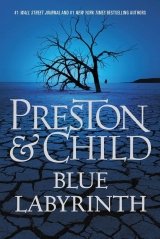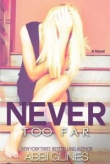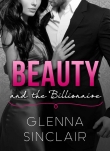
Текст книги "Blue Labyrinth"
Автор книги: Lincoln Child
Соавторы: Douglas Preston
Жанр:
Триллеры
сообщить о нарушении
Текущая страница: 3 (всего у книги 28 страниц)
7
The Osteology Department of the New York Museum of Natural History was a seemingly endless warren of rooms tucked under broad rooftops, reachable only by a massive set of double doors at the end of a long corridor containing the Museum’s fifth-floor offices, and thence by a gigantic, slow-moving freight elevator. When D’Agosta had stepped into that elevator (and found himself sharing the space with the carcass of a monkey stretched out on a dolly), he realized why the department was situated so far from the public spaces of the Museum: the place stank – as his father would have said – like a whorehouse at low tide.
The freight elevator boomed to a stop, the doors opened, top and bottom, and D’Agosta stepped out into the Osteology Department, looked around, and rubbed his hands together impatiently. His next scheduled interview was with Morris Frisby, the chair of both the Anthropology and Osteology Departments. Not that he held out much hope for the interview, because Frisby had just returned this morning from a conference in Boston, and had not been in the Museum at the time of the technician’s death. More promising was the youth shuffling over to meet him, one Mark Sandoval, an Osteology technician who’d been out for a week with a bad summer cold.
Sandoval closed the main Osteology door behind them. He looked as if he was still sick as a dog: his eyes were red and swollen, his face pale, and he was dabbing at his nose with a Kleenex. At least, D’Agosta thought, the guy was spared the terrible smell. Then again, he was probably used to it.
“I’m ten minutes early for my meeting with Dr. Frisby,” D’Agosta said. “Mind showing me around? I want to see where Marsala worked.”
“Well…” Sandoval swallowed, glanced over his shoulder.
“Is there a problem?” D’Agosta asked.
“It’s…” Another glance over the shoulder, followed by a lowering of voice. “It’s Dr. Frisby. He’s not too keen on…” The voice trailed off.
D’Agosta understood immediately. No doubt Frisby was a typical Museum bureaucrat, jealous of his petty fiefdom and gun-shy about adverse publicity. He could picture the curator: tweed jacket trailing pipe dottle, pink razor-burned wattles quivering in fussy consternation.
“Don’t worry,” D’Agosta said. “I won’t quote you by name.”
Sandoval hesitated another moment and then began leading the way down the corridor.
“I understand you were the person who worked most closely with Marsala,” D’Agosta said.
“As close as anybody could, I suppose.” He still seemed a little on edge.
“He wasn’t popular?”
Sandoval shrugged. “I don’t want to speak ill of the dead.”
D’Agosta took out his notebook. “Tell me anyway, if you don’t mind.”
Sandoval dabbed at his nose. “He was… well, a hard guy to get along with. Had something of a chip on his shoulder.”
“How so?”
“I guess you could say he was a failed scientist.”
They walked past what looked like the door of a gigantic freezer. “Go on.”
“He went to college, but he couldn’t pass organic chemistry – and without that, you’re dead meat as far as a PhD in biology goes. After college he came to work here as a technician. He was really good at working with bones. But without an advanced degree he could only go so far. It was a real sore point. He didn’t like the scientists ordering him around, everyone had to walk on eggshells with him. Even me – and I was the closest thing to a friend Victor had here. Which isn’t saying much.”
Sandoval led the way through a doorway on the left. D’Agosta found himself in a room full of huge metal vats. Overhead, a row of gigantic vents were busily sucking out the air, but it didn’t seem to help – the smell was much stronger.
“This is the maceration room,” Sandoval said.
“The what?”
“The maceration room.” Sandoval dabbed at his nose with the Kleenex. “See, one of the main jobs here in Osteology is to receive carcasses and reduce them to bones.”
“Carcasses? As in human?”
Sandoval grinned. “In the old days, sometimes. You know, donations to medical science. Now it’s all animals. The larger specimens are placed in these maceration vats. They’re full of warm water. Not sterile. Leave a specimen in a vat long enough, it liquefies, and when you pull the plug all you have left are the bones.” Sandoval pointed to the nearest soup-filled vat. “There’s a gorilla macerating in that one at the moment.”
Just then, a technician came in pushing the dolly with the monkey on it. “And that,” said Sandoval, “is a snow monkey from the Central Park Zoo. We’ve a contract with them – we get all their dead animals.”
D’Agosta swallowed uncomfortably. The smell was really getting to him now, and the spicy fried Italian sausages he’d had for breakfast weren’t sitting all that well.
“That was Marsala’s primary job,” Sandoval said. “Overseeing the maceration process. He also worked with the beetles, of course.”
“Beetles?”
“This way.” Sandoval walked back out into the main corridor, passed several more doors, then stepped into another lab. Unlike the maceration room, this space was full of small glass trays, like aquariums. D’Agosta walked up to one and peered within. Inside, he saw what appeared to be a large, dead rat. It was swarming with black beetles, busily engaged in gorging themselves on the carcass. He could actually hear the noise of their munching. D’Agosta stepped back quickly with a muttered curse. His breakfast stirred dangerously in his stomach.
“Dermestid beetles,” Sandoval explained. “Carnivorous. It’s how we strip the flesh from the bones of smaller specimens. Leaves the skeletons nicely articulated.”
“Articulated?” D’Agosta asked in a strangled voice.
“You know – wiring the bones together, mounting them on metal frames for display or examination. Marsala cared for the beetles, watched over the specimens that were brought in. He did the degreasing, too.”
D’Agosta didn’t ask, but Sandoval explained anyway. “Once a specimen is reduced to bones, it’s immersed in benzene. A good soaking turns them white, dissolves all the lipids, gets rid of the odor.”
They returned to the central hallway. “Those were his main responsibilities,” Sandoval said. “But as I told you, Marsala was a whiz with skeletons. So he was often asked to articulate them.”
“I see.”
“In fact, the articulation lab was the place Marsala made his office.”
“Lead the way, please.”
Dabbing at his nose again, Sandoval continued down the seemingly endless corridor. “These are some of the Osteology collections,” he said, gesturing at a series of doors. “The bone collections, arranged taxonomically. And now we’re entering the Anthropology collections.”
“Which are?”
“Burials, mummies, and ‘prepared skeletons’—dead bodies collected by anthropologists, often from battlefields during the Indian wars – and brought back to the Museum. Something of a lost art. We’ve been forced to return a lot of these to the tribes in recent years.”
D’Agosta glanced into an open doorway. He could make out row after row of wooden cabinets with rippled glass doors, within which lay innumerable sliding trays, each with a label affixed to it.
After passing another dozen or so storage rooms, Sandoval showed D’Agosta into a lab full of workbenches and soapstone-topped tables. The stench was fainter here. Skeletons of various animals sat on metal frames atop the benches, in various stages of completion. A few desks were pushed up against the far wall, computers and a variety of tools sitting on them.
“That was Marsala’s desk,” Sandoval said, pointing at one.
“Did he have a girlfriend?” D’Agosta asked.
“Not that I know of.”
“What did he do in his off hours?”
Sandoval shrugged. “He didn’t talk about it. He more or less kept to himself. This lab was practically his home – he worked long hours. Didn’t have much of an outside life, it seemed to me.”
“You say he was a prickly guy, hard to work with. Was there anyone in particular that he clashed with?”
“He was always getting into spats.”
“Anything that really stood out?”
Sandoval hesitated. D’Agosta waited, notebook in hand.
“There was one thing,” Sandoval said at last. “About two months back, a curator of mammalogy came in with a suite of extremely rare, almost extinct bats he’d collected in the Himalayas. Marsala put them in some of the dermestid beetle trays. Then he… messed up. He didn’t check them as frequently as he should have, left them too long. That wasn’t like Marsala at all, but at the time he seemed to have something on his mind. Anyway, if you don’t take the specimens out of the trays in time, they can be ruined. The hungry beetles chew through the cartilage and the bones get disarticulated and then they eat the bones themselves. That happened to the bat specimens. The bat scientist – he’s a little crazy, like a lot of curators – went nuts. Said some terrible things to Marsala in front of the whole Osteology staff. Really pissed Marsala off, but he couldn’t do anything about it, because he was the one at fault.”
“What was the name of this mammalogy curator?”
“Brixton. Richard Brixton.”
D’Agosta wrote down the name. “You said Marsala had something else on his mind. Any idea what it was?”
Sandoval thought a moment. “Well, around that time he’d started working with a visiting scientist on some research.”
“Is that uncommon?”
“On the contrary – it’s very common.” Sandoval pointed out the door toward a room across the hall. “That’s where visiting scientists examine bones. They’re coming in and out all the time. We get scientists from all over the world. Marsala didn’t usually work with them, though – his attitude problem and all that. In fact, this was the first scientist he’d worked for in almost a year.”
“Did Marsala say what kind of research it was?”
“No. But at the time, he’d seemed pretty pleased with himself. As if he anticipated a feather in his cap or something.”
“You recall this scientist’s name?”
Sandoval scratched his head. “I think it was Walton. But it might have been Waldron. They have to sign in and out, get credentialed. Frisby keeps a list. You could find out that way.”
D’Agosta looked around the room. “Anything else I should know about Marsala? Anything unusual, or odd, out of character?”
“No.” Sandoval blew his nose with a mighty honk.
“His body was found in the Gastropod Alcove off the Hall of Marine Life. Can you think of any reason why he should have been in that section of the Museum?”
“He never went there. Bones – this lab – was all he cared about. That’s not even on the way out.”
D’Agosta made another notation.
“Any other questions?” Sandoval asked.
D’Agosta glanced at his watch. “Where can I find Frisby?”
“I’ll take you there.” And Sandoval led the way out of the lab and up the corridor – heading back into the foulest section of the department.
8
Dr. Finisterre Paden backed away from the X-ray diffraction machine he had been hunched over, only to find himself ricocheting off what appeared to be a pillar of black cloth. He recoiled with a sharp expostulation and found himself staring up at a tall man clad in a black suit, who had somehow materialized behind him and must have been hovering, inches away, as he worked.
“What on earth?” Paden said furiously, his small, portly frame jiggling with affront. “Who let you in here? This is my office!”
The man did not react, and continued gazing down at him with eyes the color of white topaz and a face so finely modeled that it could have been carved by Michelangelo.
“Look here, who are you?” Paden asked, regaining his curatorial equilibrium. “I’m trying to get some work done and I can’t have people barging in!”
“I’m sorry,” said the man in a soothing voice, taking a step back.
“Well, so am I,” said Paden, somewhat mollified. “But this is really an imposition. And where’s your visitor’s badge?”
The man reached into his suit and removed a brown leather wallet.
“That’s no badge!”
The wallet fell open, revealing a dazzle of blue and gold.
“Oh,” said Paden, peering closely. “FBI? Good Lord.”
“The name is Pendergast, Special Agent A. X. L. Pendergast. May I sit down?”
Paden swallowed. “I suppose so.”
With a graceful flourish, the man parked himself in the only chair in the office other than Paden’s and crossed his legs, as if readying himself for a long stay.
“Is this about the murder?” Paden asked breathlessly. “Because I wasn’t even in the Museum when that happened. I don’t know anything about it, never met the victim. On top of that, I’ve no interest in gastropods. In my twenty years here, never been in that hall, not even once. So if that’s what…”
His voice trailed off as the man slowly raised a delicate hand. “It isn’t about the murder. Won’t you sit, Dr. Paden? It is your office, after all.”
Paden took a wary seat at the worktable, folded and unfolded his arms, wondering what this was about, why Museum security hadn’t notified him, and if he should answer questions or perhaps call a lawyer. Except he had no lawyer.
“Really, Dr. Paden, I do ask your forgiveness for the sudden intrusion. I have a small problem I need your help with – informally, of course.”
“I’ll do what I can.”
The man extended one hand, closed. Like a magician, he opened it slowly to reveal a blue stone. Paden, relieved that it was a mere identification problem, took the stone and examined it. “Turquoise,” he said, turning it over. “Tumbled.” He took a loupe off the worktable, placed it in his eye, and looked more closely. “It appears to be natural stone, not stabilized and certainly not reconstituted, oiled, or waxed. A fine, gemmy specimen, of an unusual color and composition. Most unusual, in fact. I’d say it’s worth a fair amount of money, perhaps more than a thousand dollars.”
“What makes it so valuable?”
“Its color. Most turquoise is sky blue, often with a greenish cast. But this stone is an unusually deep, deep blue, almost in the ultraviolet spectrum. That, along with its surrounding golden matrix, is very rare.”
He removed the loupe, held the stone back out to the FBI agent. “I hope I’ve been of assistance.”
“Indeed you have,” came the honeyed return, “but I was hoping you might tell me where it came from.”
Paden took it back, examined it for a longer period of time. “Well, it’s certainly not Iranian. I’d guess it’s American – southwestern. Startling deep-azure color with a golden spiderweb matrix. I would say this most likely comes from Nevada, with Arizona or Colorado as outside possibilities.”
“Dr. Paden, I was told you were one of the world’s foremost experts on turquoise. I can see already that I was not deceived.”
Paden inclined his head. He was surprised to meet someone from law enforcement as insightful, and as gentlemanly, as this fellow.
“But you see, Dr. Paden, I need to know the exact mine it came from.”
As he spoke, the pale FBI agent looked at him most intensely. Paden smoothed his hand over his bald pate. “Well, Mr., ah, Pendergast, that’s a horse of a different color.”
“How so?”
“If I can’t recognize the source mine from an initial visual examination – and in this case I can’t – then testing of the specimen would be required. You see—” and here Paden drew himself up as he launched into his favorite subject—“turquoise is a hydrous phosphate of copper and aluminum, which forms by the percolation of water through a rock with many cavities and empty spaces, usually volcanic. The water carries dissolved copper sulfides and phosphorous, among other things, which precipitate in the interstices as turquoise. Southwestern turquoise almost invariably occurs where copper sulfide deposits are found among potassium feldspar bearing porphyritic intrusives. It can also contain limonite, pyrites, and other iron oxides.” He rose and, moving fast on stubby legs, walked to a massive cabinet, bent over, and pulled open a drawer. “Here you see a small but exquisite collection of turquoise, all from prehistoric mines. We use it to help archaeologists identify the source of prehistoric turquoise artifacts. Come, take a look.”
Paden waved the agent over, then took the turquoise sample from him and rapidly compared it with others in the drawer. “I don’t see anything close to a match here, but turquoise can vary in appearance even from one part of a mine to another. And this is only a small sampling. Take this piece of Cerrillos turquoise, for example, from the Cerrillos mines south of Santa Fe. This rare piece comes from the famed prehistoric site known as Mount Chalchihuitl. It’s ivory with a pale-lime matrix, of great historical value, even if it isn’t the finest quality. And here we have examples of prehistoric turquoise from Nevada—”
“How terribly interesting,” Pendergast said smoothly, stemming the flow of words. “You mentioned testing. What sort of testing would be necessary?”
Paden cleared his throat. It had been mentioned to him more than once that he had a tendency to run on. “What I’ll have to do is analyze your stone – turquoise and matrix – using various means. I’ll start with proton-induced X-ray emission analysis, in which the stone is bombarded with high-speed protons in a vacuum, and the resulting X-ray emission analyzed. Fortunately, here at the Museum we have an excellent mineralogy lab. Would you care to see it?” He beamed at Pendergast.
“No, thank you,” said Pendergast. “But I’m delighted you’re willing to do the work.”
“But of course! This is what I do. Mostly for archaeologists, of course, but for the FBI–I am at your service, Mr. Pendergast.”
“I almost forgot to mention to you my little problem.”
“Which is?”
“I need the work done by noon tomorrow.”
“What? Impossible! It will take weeks. A month, at least!”
A long pause. “But would it be physically possible for you to complete the analysis by tomorrow?”
Paden felt his scalp prickle. He wasn’t sure that this man was quite as pleasant and easygoing as he seemed at first. “Well.” He cleared his throat. “It’s physically possible, I suppose, to get some preliminary results by then, but it would mean working nonstop for the next twenty hours. And even then I might not succeed.”
“Why not?”
“It would all depend on whether this particular type of turquoise has been analyzed before, with its chemical signature recorded in the database. I’ve done quite a lot of turquoise analyses for archaeologists, you see. It helps them figure out trade routes and so forth. But if this piece comes from a newer mine, we might never have analyzed it. The older the mine, the better the chance.”
A silence. “May I ask you, Dr. Paden, to kindly undertake this task?”
Paden smoothed his pate again. “You’re asking me to stay up for the next twenty hours, working on your problem?”
“Yes.”
“I have a wife and children, Mr. Pendergast! Today’s a Sunday – normally I wouldn’t even be here. And I am not a young man.”
The agent seemed to take this in. Then, with a languid motion, he reached into his pocket and removed something, again holding it in his closed hand. He reached out and opened the hand. Inside was nestled a small, glittering reddish-brown cut stone of about a carat. Instinctively, Paden reached out to take it, screwed the loupe into his eye, and examined it, turning it this way and that. “Oh my. Oh my, my. Strongly pleochroic…” He grabbed a small, handheld UV light from the table and switched it on. The stone instantly changed color, becoming a brilliant neon green.
He looked up, his eyes wide. “Painite.”
The FBI agent bowed his head. “I was not deceived in thinking you were a most excellent mineralogist.”
“Where in heaven’s name did you get this?”
“My great-grand-uncle was a collector of oddities, which I inherited along with his house. I plucked this from his collection, as an inducement. It’s yours – provided you accomplish the task at hand.”
“But this stone must be worth… good heavens, I hesitate to even put a price on it. Painite is one of the rarest gemstones on earth!”
“My dear Dr. Paden, the information on what mine that turquoise came from is far more precious to me than that stone. Now: can you do it? And,” he added dryly, “are you sure your wife and children won’t object?”
But Paden was already on his feet, placing the turquoise in a ziplock bag and thinking ahead to the many chemical and mineralogical tests he would need to perform. “Object?” he said over his shoulder as he departed into the inner sanctum of his laboratory. “Who the hell cares?”








